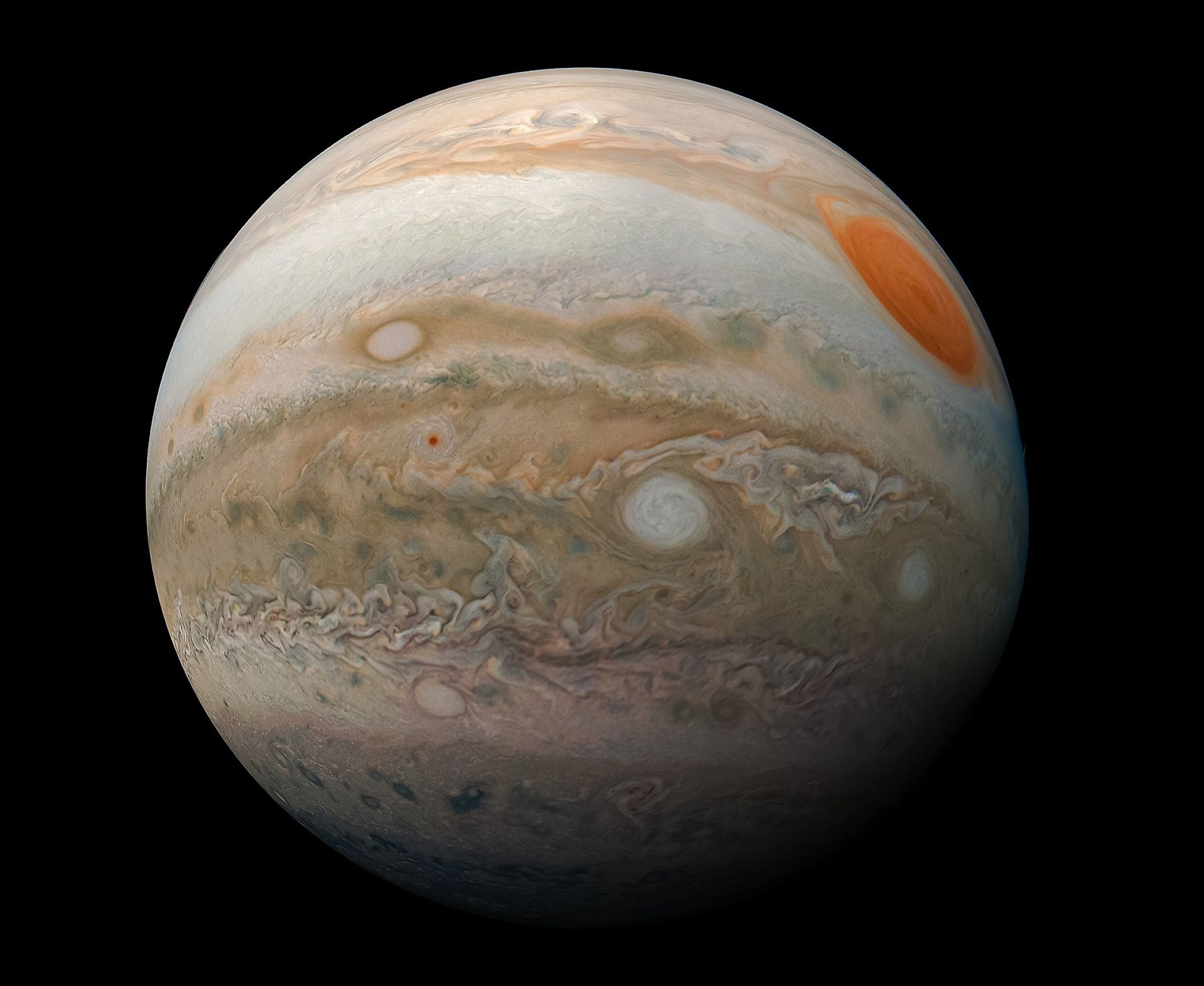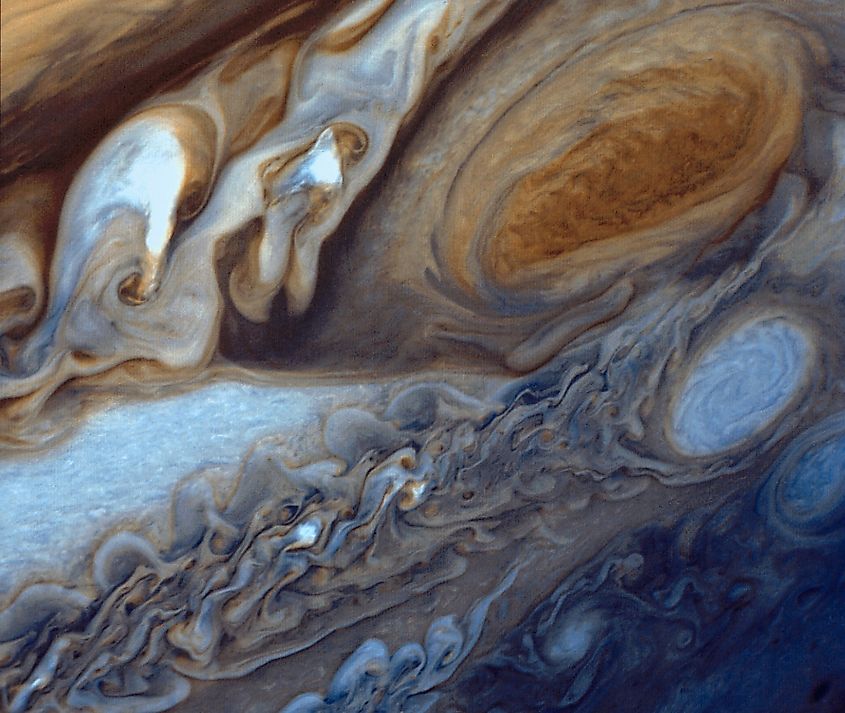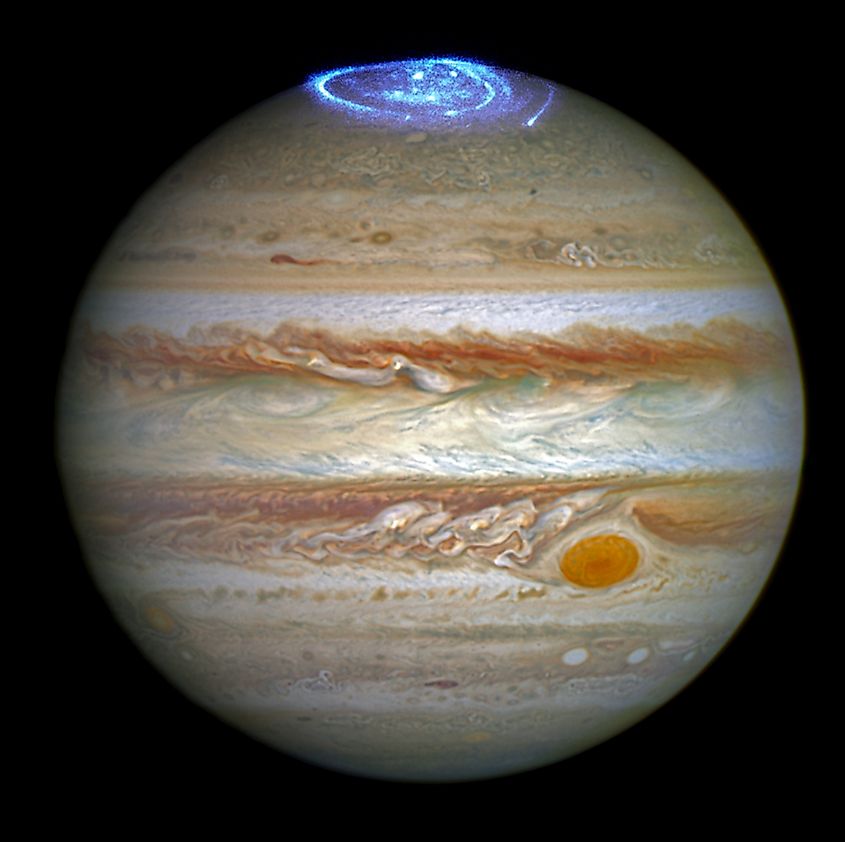
Ten Facts About Jupiter You Probably Didn’t Know
Jupiter is the largest and most massive planet in the solar system. It is also one of the most stunning planets to observe, with its large bands making the planet appear both beautiful and distinct. To celebrate just how cool of a planet Jupiter is, here are ten facts about the gas giant you may not have known.
1: Jupiter Is Made Of The Same Stuff As The Sun
Both the sun and Jupiter are composed mostly of hydrogen and helium. The sun is 73% hydrogen and 25% helium, with the remaining 2% being various other elements such as lithium and oxygen. Meanwhile, Jupiter is 90% hydrogen, with the remaining 10% being almost entirely helium. In fact, the composition between the sun and Jupiter is so similar that if Jupiter were to increase its mass by a factor of about 80, it would transform into a star.
2: Jupiter Has The Fastest Rotation Of The Planets
Jupiter spins faster than any other planet in our solar system. It takes Jupiter only ten hours to rotate once about its axis. At its equator, Jupiter rotates at a speed of 22,000 miles per hour (35,400 kilometres per hour). For comparison, the Earth rotates at a speed of 1,000 miles per hour (1610 kilometres per hour). Jupiter rotates 22,000 times faster than Earth. Interestingly, Jupiter’s fast rotation is what creates the large bands that stretch across its atmosphere. The chemicals in Jupiter’s atmosphere are stretched by its fast rotation.
3: Jupiter’s Interior Has A Sea Of Liquid Hydrogen
Far beneath Jupiter’s cloud tops, pressures and temperatures become so high that hydrogen actually becomes a liquid. When hydrogen becomes a liquid, it actually behaves like a metal and can conduct electricity. The hydrogen within Jupiter becomes liquid metallic hydrogen, and the electricity it generates also generates the largest magnetic field of any planet in the solar system.
4: Jupiter Has The Strongest Magnetic Field
Among all the planets in the solar system, Jupiter possesses the strongest magnetic field. In fact, Jupiter’s magnetic field is so big and strong that if we could see it with our eyes, it would be one of the brightest objects in the sky. The magnetic field is generated by the vast sea of liquid hydrogen in its interior, and has an average strength 20,000 times larger than Earth’s magnetic field.
5: Jupiter Has The Largest Storm

Jupiter is home to the largest known storm in the solar system, called the Great Red Spot (GRS). The GRS is a hurricane-like storm that has existed on Jupiter for at least 300 years. The earliest observations of the GRS date to the early 1700s, yet it has likely existed for even longer. At one point, the GRS was over three times larger than the Earth, yet it has actually been shrinking over time. As of 2017, the GRS is about 1.3 times larger than Earth. That means that Jupiter is home to a storm that could completely engulf the Earth.
6: Jupiter Was The First Planet Observed With A Telescope
In 1610, the astronomer Galileo Galilei became the first human in history to observe the planets with a telescope telescope. The first planet he looked at was Jupiter. Galileo’s observations of Jupiter would become one of the most important moments in the history of science. Galileo discovered four moons orbiting Jupiter, confirming that not everything orbited the Earth. Galileo’s observations of Jupiter proved that the Earth was a planet that orbited the sun, making it some of the first concrete evidence of the heliocentric model.
7: Jupiter Creates Its Own Northern Lights

On Earth, the Northern Lights are produced by the interaction of solar radiation with our magnetic field. Charged particles from the sun are deflected by our magnetic field towards the poles, where they interact with the chemicals in our atmosphere to produce the aurora. On Jupiter, it is a different story. Solar radiation is fairly weak at such a far distance, yet Jupiter still experiences the aurora. Amazingly, the strength of Jupiter’s magnetic field actually produces the aurora. Radiation from Jupiter itself gets caught in the magnetic field and interacts with the chemicals in its atmosphere.
8: Jupiter Doesn’t Have A Solid Surface
As a gas giant, Jupiter lacks a solid surface. Rather, Jupiter is probably just gas all the way through. Although it currently remains unknown whether the core of Jupiter is solid or not, even if it is solid, it would be unlike anything we are familiar with. Jupiter likely did have a solid surface at one point, yet it has probably eroded away over time.
9: Jupiter Has 79 Moons
Jupiter has one of the largest moon systems in the solar system. Current estimates place the number of moons around Jupiter at 79. Of those 79, 53 are named or confirmed to exist. The remaining moons are still awaiting names and confirmation.
10: Jupiter Used To Have Rings Like Saturn
Every gas giant in our solar system, including Jupiter, have rings. However, none are nearly as brilliant or easy to see as Saturn’s. Jupiter’s rings are small and dark, yet astronomers believe that Jupiter may have once had rings that looked like Saturn’s. Rings are likely a temporary feature of a gas giant, and they tend to not stick around for a relatively long period of time. Based on the size and mass of Jupiter’s current ring system, it may have had a ring system like Saturn’s sometime in the last billion years.











